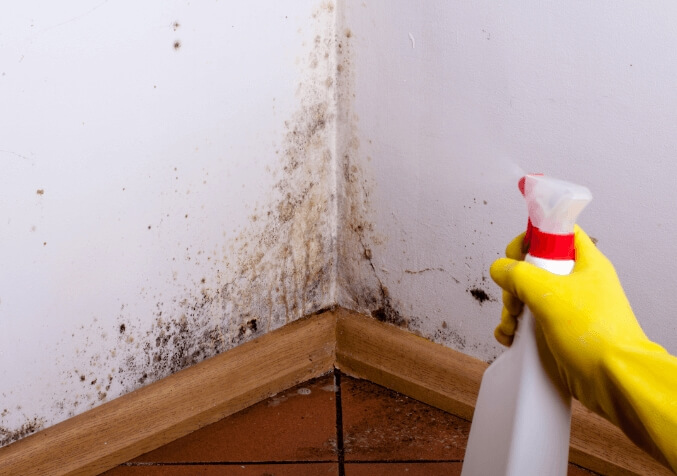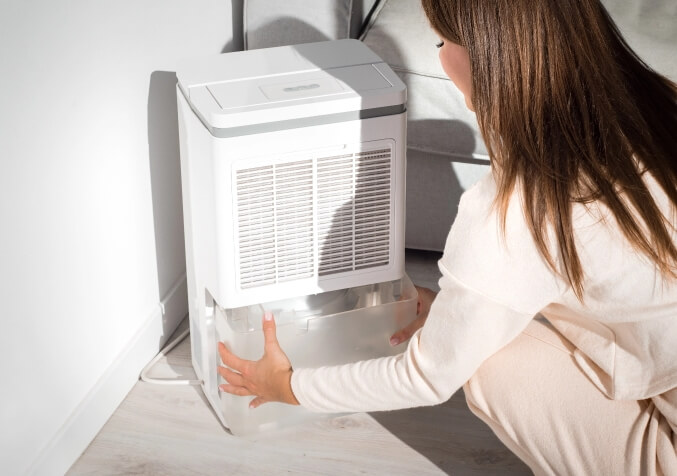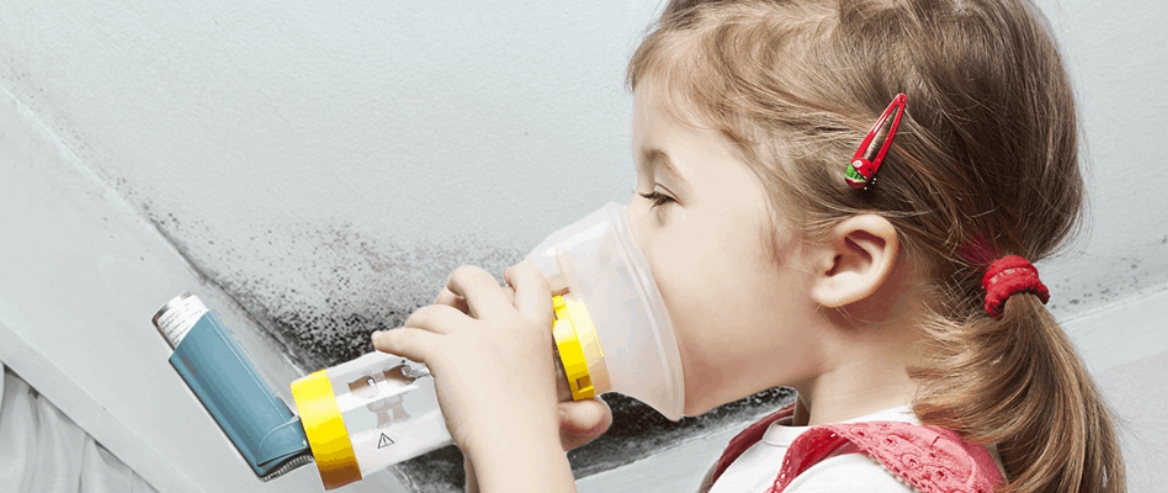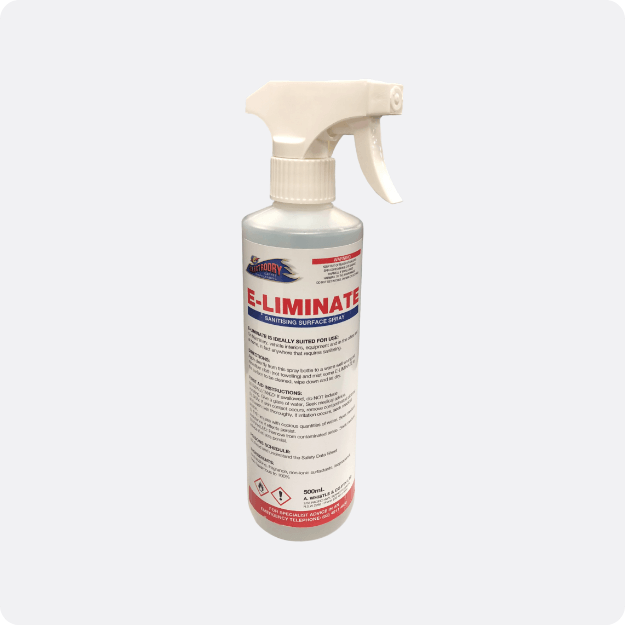Mould is widespread across many areas of Australia at the moment. The relentless rainfall in many regions has unfortunately created the ideal conditions for mould to thrive.
And while mould is certainly bad for your home, it has detrimental effects on your health, too. We share what they are below and how you can best treat mould yourself.
What Is Mould?
Mould is a fungus that lives on plant and animal matter, encompassing building materials like wood, plasterboard and furnishings.

It produces best in damp, poorly ventilated areas and reproduces by making spores. When they land on damp spots indoors, they may begin to grow and spread.
To grow, it needs moisture or an environment where the relative humidity is regularly above 50%.
If you have mould in your home, then you are more likely to have respiratory problems, infections, asthma and allergies.
Why is Mould Bad for Your Health?

Mould releases tiny spores into the air, which can then be inhaled. When we breathe in the microscopic spores, they sit in our respiratory tract and lungs and can trigger all types of reactions.
This fungus is most prominent in areas like the bathroom however can also grow in other areas, meaning that even while you sleep, you may be affected by these spores.
What Are Common Reactions to Mould?
Mould spores often trigger allergic or histamine reactions which can cause a runny nose, breathing issues, sore eyes, lethargy, and if you're asthmatic, asthma attacks.

The Victorian Health Department advises that there are people who may be more susceptible to more severe health repercussions including those with:
- Weakened immune systems
- Allergies
- Severe asthma
- Chronic, obstructive, or allergic lung diseases.
If you have any of the above conditions and are concerned that mould may be affecting you or someone in your household, speak with your healthcare professional for advice.
Other studies have also shown that children who are continually exposed to mould are more likely to develop asthma.
The effect of mould is cumulative. Exposure to a small amount of mould is unlikely to affect most people but prolonged exposure increases the risk of many adverse health outcomes.
What Should You Do When You Have Mould?

We can offer you an option for treating smaller mould infestations in your home, but you must remember this.
Mould will continue to return if you don’t rectify the reason for the mould – that is, the moisture source.
This can be things like leaking pipes, rising damp in basements, or rain seeping in because of damage to the roof or window frames. A building inspector or plumber can help you identify and fix the issue.
Here is what we recommend for smaller mould infestations in your home.
- Mix a 1:1 mix of white vinegar and water in a spray bottle, spray liberally onto the mould, let it soak for 20 minutes (you may need to reapply), rinse and wipe down thoroughly. We recommend this process be repeated the following day for effective mould treatment.
- If a mark remains, use sugar soap to clean the area.
So why does this work? Vinegar has antifungal and antibacterial properties that treat almost all types of mould. Best of all, it’s better for the environment and a cost-effective option.
However, don’t use vinegar repeatedly on marble or stone, as its acidity can etch the surface.
On a side note, despite what you’ve been told, don’t use bleach to treat mould. Our article on why you shouldn’t treat mould with bleach delves into this topic further, however the main reason is that bleach takes the colour out of mould but doesn’t actually treat the problem.
How Can You Prevent Mould?

They say that prevention is better than cure, and this is particularly true when it comes to mould. Your aim is to remove or minimise how much moisture is in your home.
Here are a few recommendations:
- If you have a concentrated area of mould, it is likely due to a leak. You’ll need to get in touch with a builder to rectify this.
- Increase ventilation in bathrooms by opening windows when you can and turn on your exhaust fans while showering, cooking or using the dryer. Leave the fan on for an additional 20 minutes after you leave the room if possible.
- Install dehumidifiers, such as a small desiccant dehumidifier like Damp-Rid. You could also invest in a larger dehumidifier if your home is susceptible to mould or if you have health concerns about anyone in your household and want to take robust preventative measures.
If your mould issues are severe or ongoing, then we highly recommend calling the professionals. Electrodry Mould Cleaning effectively treats mould and its spores. Your qualified technician will provide practical, cost-effective recommendations to prevent mould from returning.



